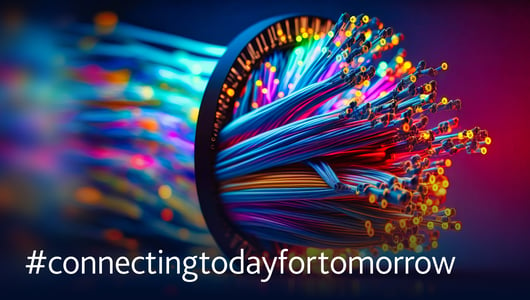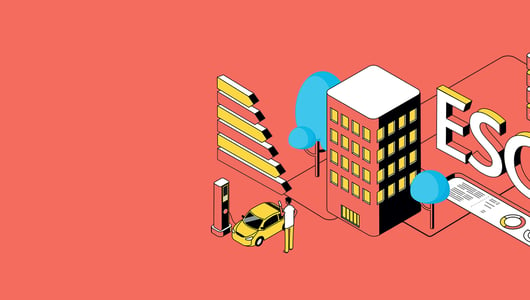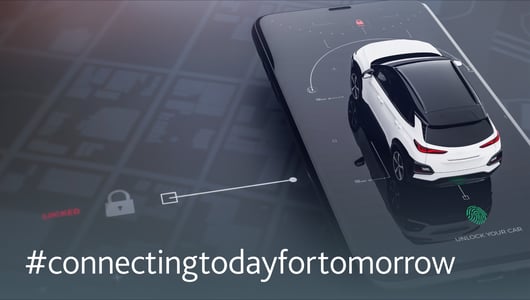1. What is the difference between 5G and Gigabit?
5G (Fifth Generation) is wireless connectivity and will be most commonly used for mobile internet, though it can also be used for home internet connections. On the other hand, Gigabit requires a fibre cable connection through a router.
Though both will offer much faster upload / download speeds, lower latency, and the ability to stream without buffering their benefits go further than this.
5G technology has the capacity to support more devices at the same time and so as we increasingly rely on the IoT to go about our day-to-day lives we will, without necessarily being conscious of it, be relying of 5G connections. From providing live updates on availability of public ev charge points, to enabling video doorbells and supporting the rollout of Smart energy devices.
2. What is the difference between macro and micro (small cell) installation?
A macrocell is a mobile network cell that serves to provide radio coverage for a broad region of mobile network access. A macrocell varies from a microcell as it has a wider coverage area and acts as the hub for the locality and performs more efficiently.
A microcell is used to increase capacity and compliment the microcell over a much smaller specified area to provide a more robust and better user experience (avoid network busy / drop calls).
3. What is the difference between Fibre To The Premises (FTTP) and Fibre To The Cabinet (FTTC)?
FTTP means that the fibre cable runs all the way into your premises and is therefore full fibre. This will provide you with the fastest connection.
FTTC is when fibre cable runs to your roadside cabinet however, from cabinet to premises you are using copper cables. FTTC is currently the most common type of connection but is, in a lot of locations, being replaced with FTTP so that providers can offer gigabit connectivity.
4. Why are wayleaves needed?
Whether it is FTTC or FTTP, when laying cables, they are inevitably going across (above or below ground level) a private landowner’s demise. Agreements are needed with the landowner to give the utility provider the legal right to do this.
5. As a business how can I check the mobile coverage and internet connectivity of a property?
As the IT decision maker there is a lot of pressure on you to do everything possible to ensure you are offering your business’ employee and visitors the best mobile and broadband connection possible. Choosing the wrong supplier can result in reduced productivity and could ultimately cost you business.
Cluttons, in association with Ewave, can rate and certify the level of connectivity for any commercial building. This certification will consider:
- Fixed network carrier infrastructure in local environs
- Fixed network carrier infrastructure in building
- Mobile coverage assessment, all operators and technologies
- Coverage predictions across all floors and areas
- Building distribution routes to tenant areas
- Provision of solutions to resolve any issues, increasing ratings
6. As a consumer how can I check the mobile and broadband coverage of my home or potential home?
Ofcom offer a free mobile or broadband checker which will use your postcode to check the highest upload / download speeds available and mobile coverage. This tool is available here.This is also available in an app which will test your mobile connectivity and, when connected to wi-fi, will run tests on your wi-fi performance.
Related insights

UKREiiF panel: Capacity for Connectivity – Delivering World Class Digital Infrastructure for the UK
The consumer demand for digital connectivity is clear but is the UK investing adequately to enable economic growth? Join us in the debate at UKREiiF.
Net zero doesn’t work without high-quality connectivity
The UK has been at the forefront of the world’s journey to net zero, being one of the first countries to pledge to reach the milestone by 2050.
How smart are you?
Or to put it another way. How many smart devices did you use/interact with yesterday?
The what, where and why of wayleaves
How are you reading this blog today? Is it from your laptop in the office (be that work or home) or are you on your smart phone device, whilst on the move?
5 post-pandemic trends shaping the Central London sales & lettings market
The COVID-19 pandemic led to dramatic changes in how we live and work and has had a huge impact on the UK housing market.
Future office and 5G
The complexities and changes resulting from the pandemic have forced workers to adapt, expectations around working practices have changed rapidly and workplaces must evolve to keep pace.
Understanding connectivity: terminology
The terminology around Connectivity can be tricky to decode. Here our team tells us the most frequently heard terms and explains what they mean.
Cluttons welcomes PM’s commitment to connectivity – but there are significant challenges ahead
Cluttons, the property consultancy and market leading adviser to the largest mobile operators and fixed-line providers, welcomes Boris Johnson’s commitment to making connectivity one of his top five priorities.
A well connected workplace is a win win
In an age where good connectivity has become more important to occupiers than transport links and amenities, digital infrastructure is now a key factor in the decision making process when it comes to taking on a new office space.
Digital infrastructure is key to unlocking performance
In a wide-ranging discussion at today’s London Real Estate Forum, a distinguished panel of experts explored how London’s digital infrastructure is being improved so that it can effectively compete on the global stage.

